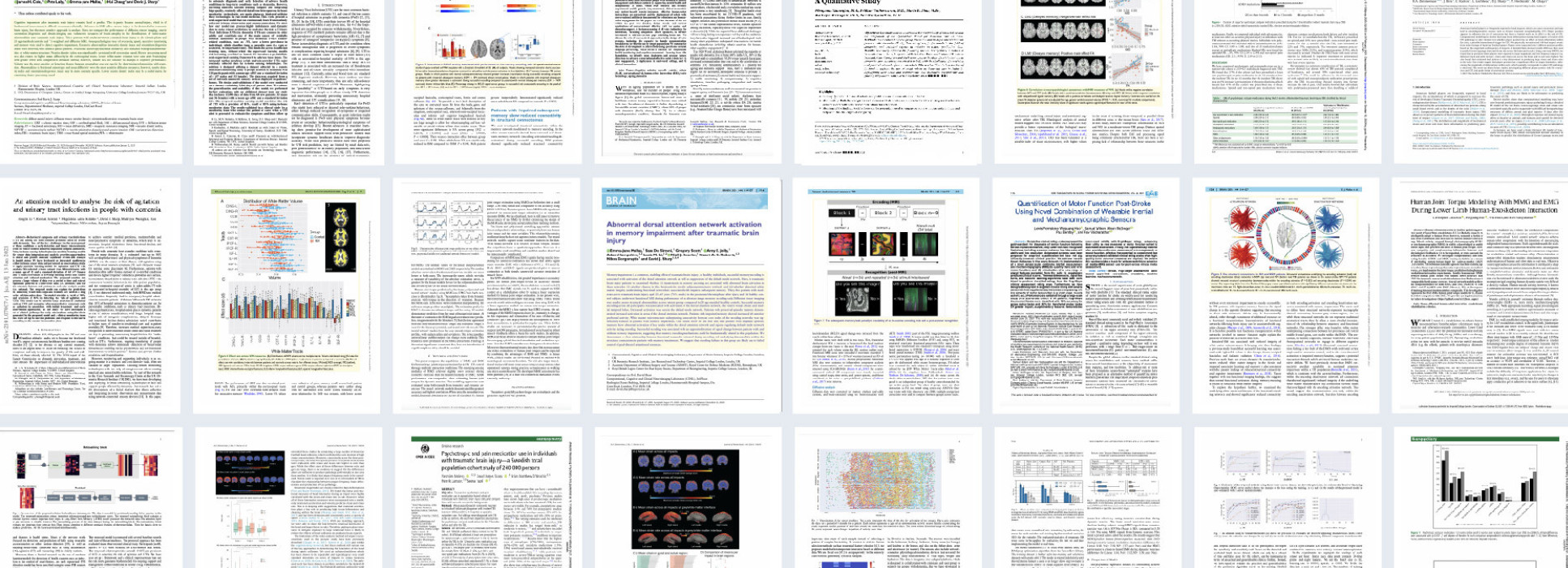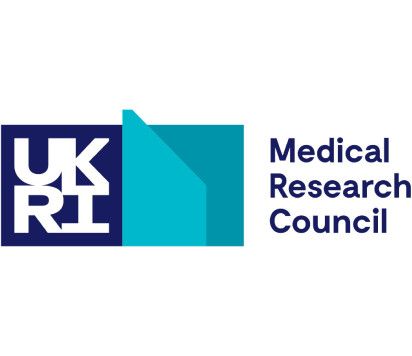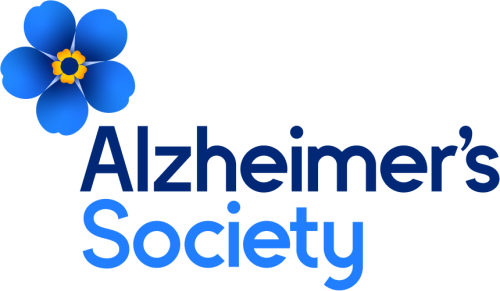
Results
- Showing results for:
- Reset all filters
Search results
-
Journal articleGraham NS, Sharp DJ, 2023,
Dementia after traumatic brain injury
, BMJ: British Medical Journal, Vol: 383, Pages: 2065-2065, ISSN: 1759-2151 -
Journal articlePalermo F, Chen Y, Capstick A, et al., 2023,
TIHM: an open dataset for remote healthcare monitoring in dementia
, Scientific Data, Vol: 10, Pages: 1-10, ISSN: 2052-4463Dementia is a progressive condition that affects cognitive and functional abilities. There is a need for reliable and continuous health monitoring of People Living with Dementia (PLWD) to improve their quality of life and support their independent living. Healthcare services often focus on addressing and treating already established health conditions that affect PLWD. Managing these conditions continuously can inform better decision-making earlier for higher-quality care management for PLWD. The Technology Integrated Health Management (TIHM) project developed a new digital platform to routinely collect longitudinal, observational, and measurement data, within the home and apply machine learning and analytical models for the detection and prediction of adverse health events affecting the well-being of PLWD. This work describes the TIHM dataset collected during the second phase (i.e., feasibility study) of the TIHM project. The data was collected from homes of 56 PLWD and associated with events and clinical observations (daily activity, physiological monitoring, and labels for health-related conditions). The study recorded an average of 50 days of data per participant, totalling 2803 days.
-
Journal articleParkinson M, Doherty R, Curtis F, et al., 2023,
Using home monitoring technology to study the effects of traumatic brain injury in older multimorbid adults
, Annals of Clinical and Translational Neurology, Vol: 10, Pages: 1688-1694, ISSN: 2328-9503Internet of things (IOT) based in-home monitoring systems can passively collect high temporal resolution data in the community, offering valuable insight into the impact of health conditions on patients' day-to-day lives. We used this technology to monitor activity and sleep patterns in older adults recently discharged after traumatic brain injury (TBI). The demographics of TBI are changing, and it is now a leading cause of hospitalisation in older adults. However, research in this population is minimal. We present three cases, showcasing the potential of in-home monitoring systems in understanding and managing early recovery in older adults following TBI.
-
Journal articleCrook-Rumsey M, Daniels S, Abulikemu S, et al., 2023,
Multicohort cross-sectional study of cognitive and behavioural digital biomarkers in neurodegeneration: the Living Lab study protocol
, BMJ Open, Vol: 13, Pages: 1-9, ISSN: 2044-6055Introduction and aimsDigital biomarkers can provide a cost-effective, objective, and robust measure forneurological disease progression, changes in care needs, and the effect of interventions.Motor function, physiology and behaviour can provide informative measures of neurologicalconditions and neurodegenerative decline. New digital technologies present an opportunityto provide remote, high-frequency monitoring of patients from within their homes. Thepurpose of the Living Lab study is to develop novel digital biomarkers of functionalimpairment in those living with neurodegenerative disease (NDD) and neurologicalconditions.Methods and analysisThe Living Lab Study is a cross-sectional observational study of cognition and behaviour inpeople living with NDDs and other, non-degenerative neurological conditions. Patients (n≥25for each patient group) with Dementia, Parkinson’s disease, Amyotrophic Lateral Sclerosis, Mild Cognitive Impairment, Traumatic Brain Injury, and Stroke along with controls (n≥60) willbe pragmatically recruited. Patients will carry out activities of daily living and functionalassessments within the living lab. The living lab is an apartment-laboratory containing afunctional kitchen, bathroom, bed and living area to provide a controlled environment todevelop novel digital biomarkers. The living lab provides an important intermediary stagebetween the conventional laboratory and the home. Multiple passive environmental sensors,internet-enabled medical devices, wearables, and EEG will be used to characterise functionalimpairments of NDDs and non-NDD conditions. We will also relate these digital technologymeasures to clinical and cognitive outcomes.Ethics and disseminationEthical approvals have been granted by the Imperial College Research Ethics Committee(reference number: 21IC6992). Results from the study will be disseminated at conferencesand within peer-reviewed journals.
-
Journal articleGraham NSN, Cole JH, Bourke NJ, et al., 2023,
Distinct patterns of neurodegeneration after TBI and in Alzheimer's disease
, Alzheimer's and Dementia, Vol: 19, Pages: 3065-3077, ISSN: 1552-5260IntroductionTraumatic brain injury (TBI) is a dementia risk factor, with Alzheimer's disease (AD) more common following injury. Patterns of neurodegeneration produced by TBI can be compared to AD and aging using volumetric MRI.MethodsA total of 55 patients after moderate to severe TBI (median age 40), 45 with AD (median age 69), and 61 healthy volunteers underwent magnetic resonance imaging over 2 years. Atrophy patterns were compared.ResultsAD patients had markedly lower baseline volumes. TBI was associated with increased white matter (WM) atrophy, particularly involving corticospinal tracts and callosum, whereas AD rates were increased across white and gray matter (GM). Subcortical WM loss was shared in AD/TBI, but deep WM atrophy was TBI-specific and cortical atrophy AD-specific. Post-TBI atrophy patterns were distinct from aging, which resembled AD.DiscussionPost-traumatic neurodegeneration 1.9–4.0 years (median) following moderate-severe TBI is distinct from aging/AD, predominantly involving central WM. This likely reflects distributions of axonal injury, a neurodegeneration trigger.HighlightsWe compared patterns of brain atrophy longitudinally after moderate to severe TBI in late-onset AD and healthy aging.Patients after TBI had abnormal brain atrophy involving the corpus callosum and other WM tracts, including corticospinal tracts, in a pattern that was specific and distinct from AD and aging.This pattern is reminiscent of axonal injury following TBI, and atrophy rates were predicted by the extent of axonal injury on diffusion tensor imaging, supporting a relationship between early axonal damage and chronic neurodegeneration.
This data is extracted from the Web of Science and reproduced under a licence from Thomson Reuters. You may not copy or re-distribute this data in whole or in part without the written consent of the Science business of Thomson Reuters.
Awards
- Finalist: Best Paper - IEEE Transactions on Mechatronics (awarded June 2021)
- Finalist: IEEE Transactions on Mechatronics; 1 of 5 finalists for Best Paper in Journal
- Winner: UK Institute of Mechanical Engineers (IMECHE) Healthcare Technologies Early Career Award (awarded June 2021): Awarded to Maria Lima (UKDRI CR&T PhD candidate)
- Winner: Sony Start-up Acceleration Program (awarded May 2021): Spinout company Serg Tech awarded (1 of 4 companies in all of Europe) a place in Sony corporation start-up boot camp
- “An Extended Complementary Filter for Full-Body MARG Orientation Estimation” (CR&T authors: S Wilson, R Vaidyanathan)

Established in 2017 by its principal funder the Medical Research Council, in partnership with Alzheimer's Society and Alzheimer’s Research UK, The UK Dementia Research Institute (UK DRI) is the UK’s leading biomedical research institute dedicated to neurodegenerative diseases.


